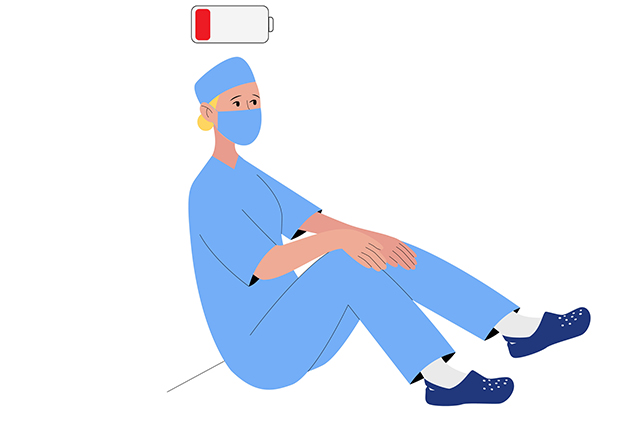As physicians, we often find ourselves at the center of deeply human experiences — sharing in moments of vulnerability, uncertainty and hope. The physician-patient relationship is a cornerstone of medicine, one built on trust, empathy and collaboration. While much emphasis is placed on meeting the needs of the patient, it is equally important to recognize that this relationship is a two-way street. For the relationship to thrive, the well-being, time and needs of the physician must also be acknowledged and supported.
At its best, the physician-patient relationship is a dynamic exchange. Patients entrust us with their stories, anxieties and health decisions, and in return, we offer our knowledge, compassion and guidance. This reciprocity fosters a therapeutic bond that benefits both parties: Patients feel seen and heard, while physicians find meaning and fulfillment in their work. However, achieving this balance requires a recognition that physicians are not immune to the same challenges and stressors that affect all humans. Our ability to provide optimal care is closely tied to our mental, emotional and physical health. When these needs are neglected, the quality of care — and the strength of the physician-patient relationship — can suffer.
The Importance of Physician Well-Being
Physician burnout is a well-documented phenomenon. Long hours, administrative burdens and the emotional weight of patient care often contribute to stress and fatigue. These challenges are compounded by the expectation to always prioritize patients, sometimes at the expense of our own well-being. Yet, we must acknowledge that well-cared-for physicians are better equipped to care for their patients. Just as a patient benefits from time and attention during an appointment, a physician benefits from protected time for rest, self-reflection and professional growth. Institutions like Johns Hopkins are increasingly recognizing the importance of physician wellness programs, fostering a culture where seeking support is not a sign of weakness but a vital component of resilience.
Time: A Precious Commodity
One of the greatest barriers to a healthy physician-patient relationship is time — or rather, the lack of it. Short appointment slots, overflowing schedules and administrative tasks often leave little room for the meaningful conversations that are the bedrock of trust and understanding. Patients deserve time to share their concerns fully, and physicians deserve time to listen, process and respond thoughtfully. To achieve this, systemic changes are needed — changes that prioritize the quality of interactions over the quantity of patients seen.
The Path Forward
Reimagining the physician-patient relationship as a two-way street is not just about improving outcomes for patients — it’s about creating a sustainable future for medicine. This means advocating for policies and practices that support physician well-being, fostering open communication, and promoting a culture of mutual respect and understanding. As physicians, we are privileged to serve our patients, but we must also allow ourselves to be served by the systems and relationships that sustain us. By embracing the dual nature of the physician-patient relationship, we can build a more compassionate and equitable health care environment, one that honors the humanity of all involved.
Through my own journey in medicine, I have come to appreciate the profound interconnectedness of care. Each conversation with a patient reminds me that while we, as physicians, may guide and heal, we are also continuously shaped and inspired by the people we serve. It is this shared journey that makes the practice of medicine not only a profession but a calling. Let us continue to walk this two-way street together.
Related Content
- The Mental Health Crisis in Medical Education: Sharing Stories, Normalizing Unwellness and Seeking Help
- Dealing with Mental Health in Academia
- Managing Burnout: Advice for New Medical Trainees
Want to read more from the Johns Hopkins School of Medicine? Subscribe to the Biomedical Odyssey blog and receive new posts directly in your inbox.
